30 Common Backyard Birds in Tennessee (With Pictures)
Last Updated on
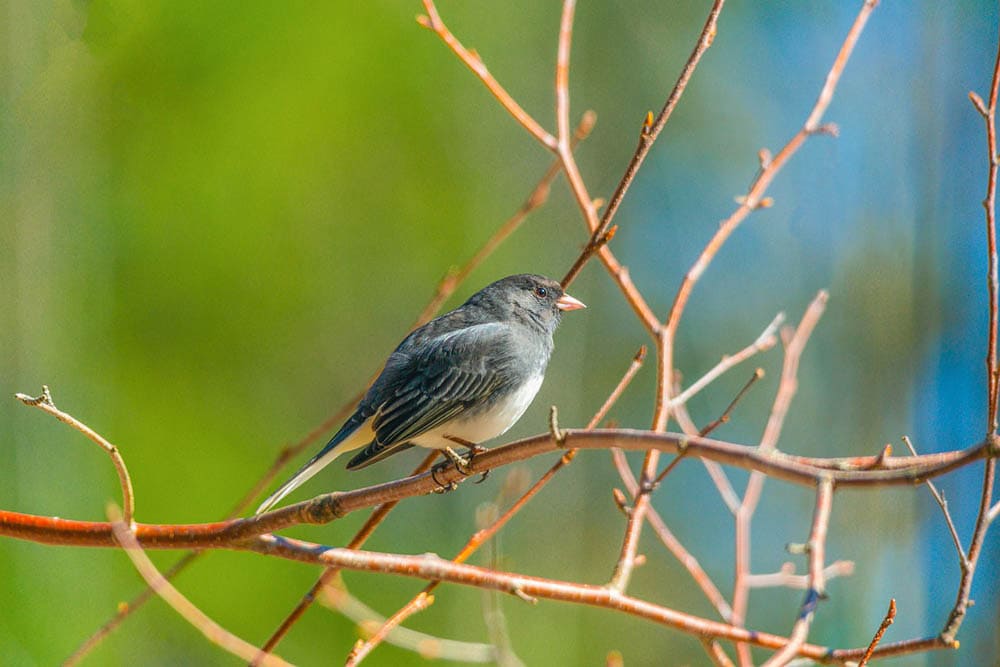
If you live in Tennessee, it’s only natural to wonder what kind of birds visit your backyard. There are over 300 bird species in the state, and if you’re keeping an eye out, you’ll see more than a few in your yard.
Here, we highlight 30 of the most common birds in Tennessee and give you advice on how you can attract them to your yard.

The 30 Most Common Backyard Birds in Tennessee
1. Red-Bellied Woodpecker
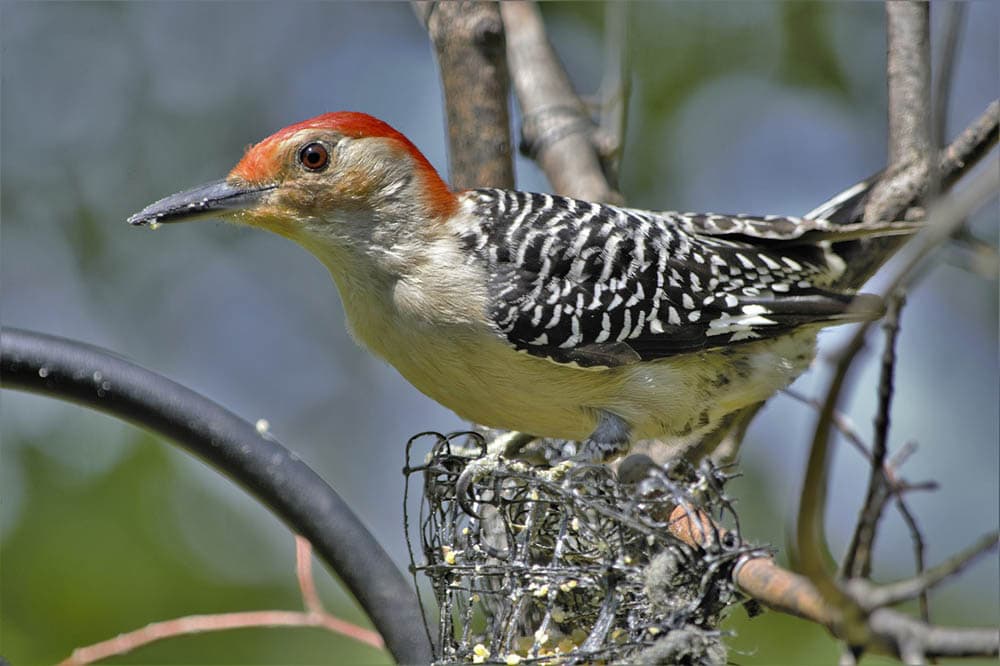
| Population | 16 million |
| Size | 9 to 11 inches |
| Habitat | Forests near rivers and streams |
| Diet | Insects, acorns, nuts, and fruit |
The red-bellied woodpecker is a bird that you can find in Tennessee any month of the year, and while they don’t love suburban areas, you might catch them eating at your bird feeder because they love eating different nuts.
2. American Goldfinch
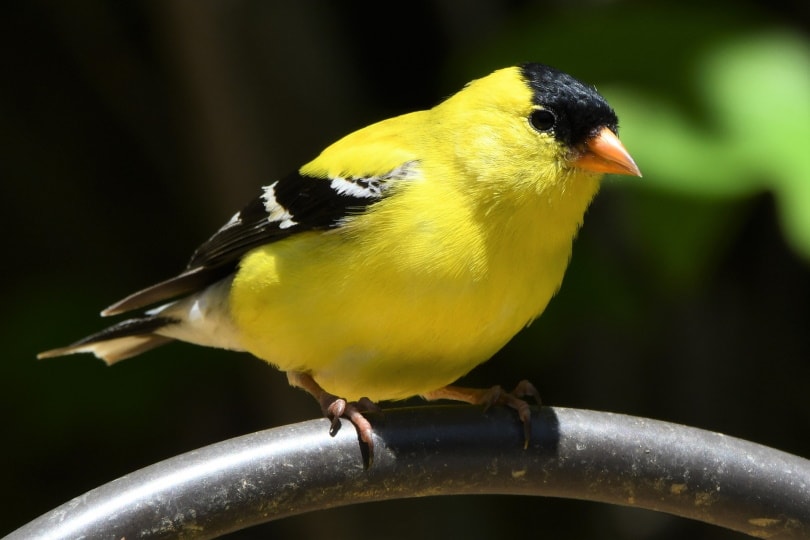
| Population | 24 million |
| Size | 4.3 to 5.1 inches |
| Habitat | Weedy fields and floodplains |
| Diet | Seeds and certain insects |
The American goldfinch is a bird that stays in Tennessee year-round. Since they love chowing down on seeds, if you live in an open area, you should be able to attract them to your feeder.
3. Eastern Bluebird
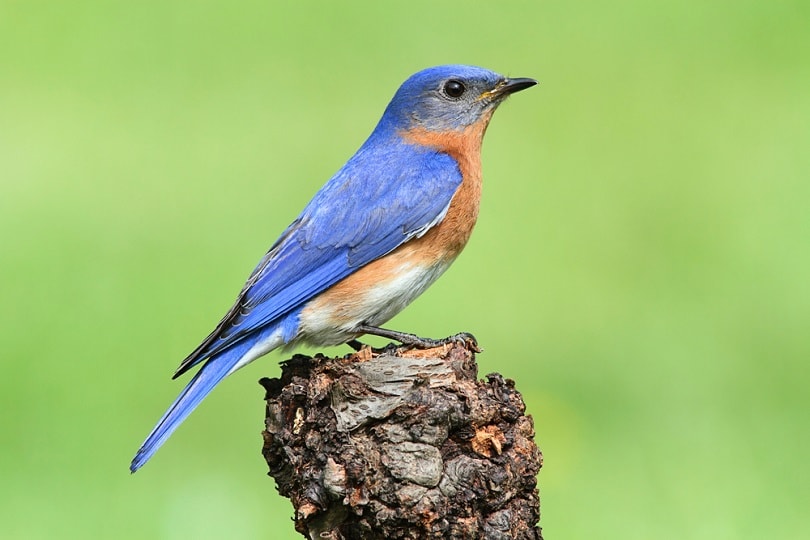
| Population | 20 million |
| Size | 6.3 to 8.3 inches |
| Habitat | Open country around trees |
| Diet | Insects, fruits, and berries |
Bluebirds are gorgeous birds, and as long as you live in an open area with a few trees around, you should be able to spot a few. However, since they feed primarily on insects, getting them to a feeder can be a challenge.
4. Carolina Chickadee
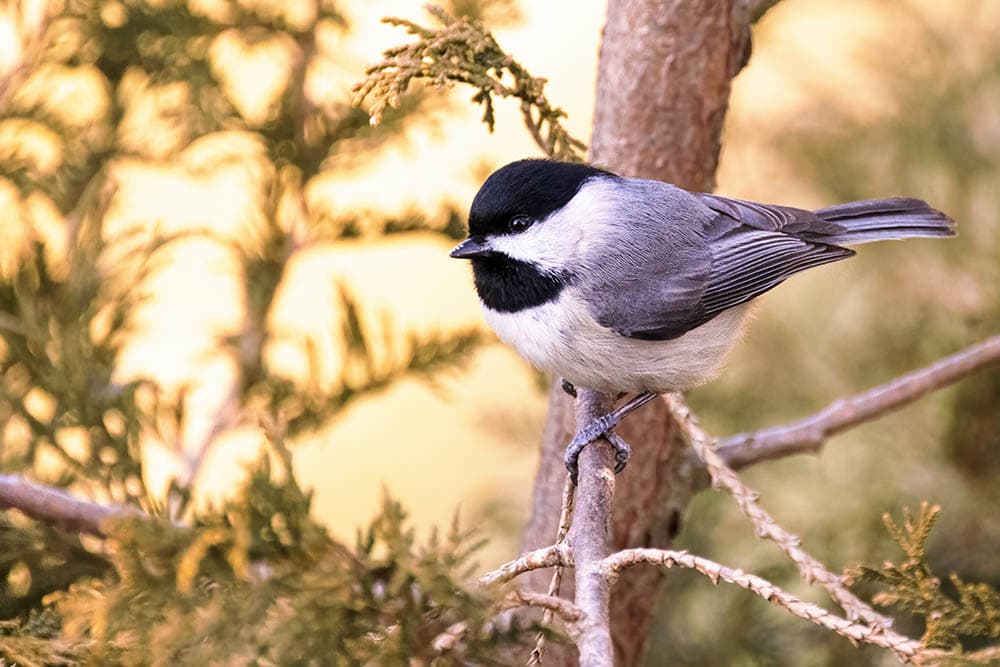
| Population | 12 million |
| Size | 4.3 to 4.7 inches |
| Habitat | Deciduous forest and pine woods |
| Diet | Sunflower seeds, peanut chips, and suet |
If you put out a feeder with sunflower seeds, there’s a good chance that you’ll attract Carolina chickadees to your backyard. While they prefer wooded areas, they might stop by for a bite to eat if they see food while passing through.
5. American Robin
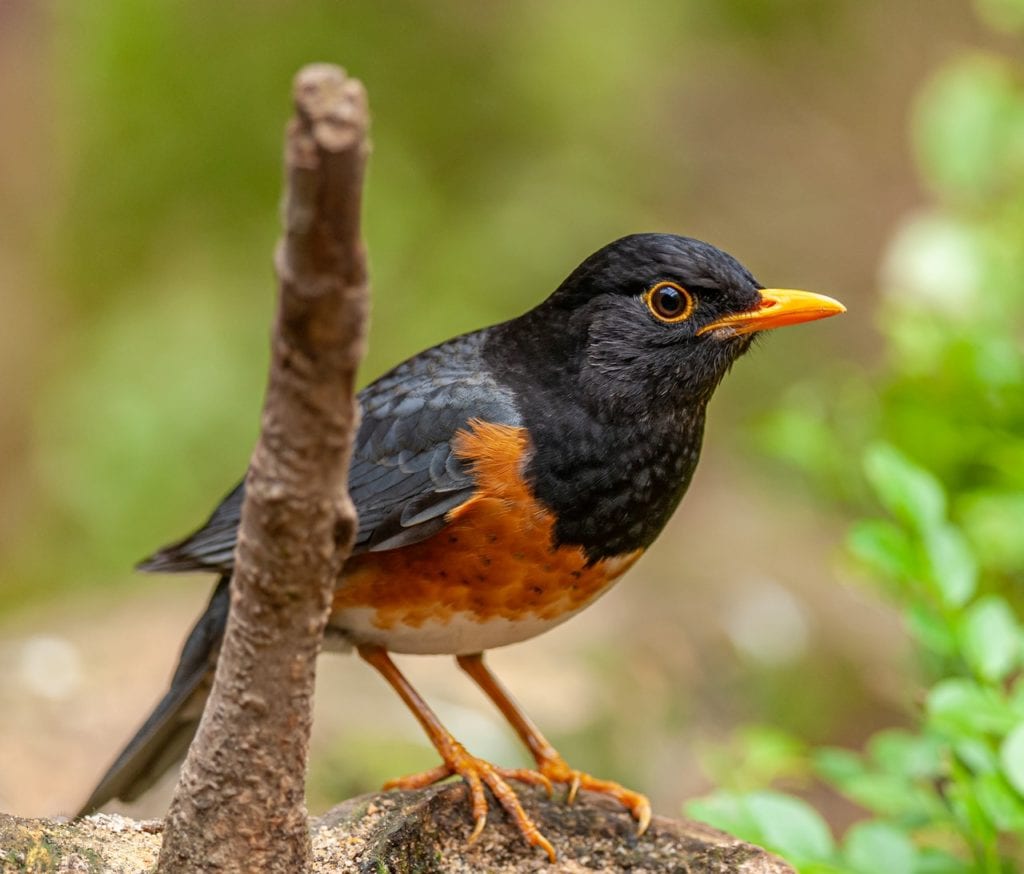
| Population | 370 million |
| Size | 9.1 to 11 inches |
| Habitat | Woodlands, suburban backyards, parks, and grassland |
| Diet | Insects, berries, and earthworms |
With over 370 million American robins out there, this is one of the easiest birds to attract to your backyard. Due to their narrow diet, it’s best to put out nesting boxes if you want to see them in your yard!
6. Northern Cardinal
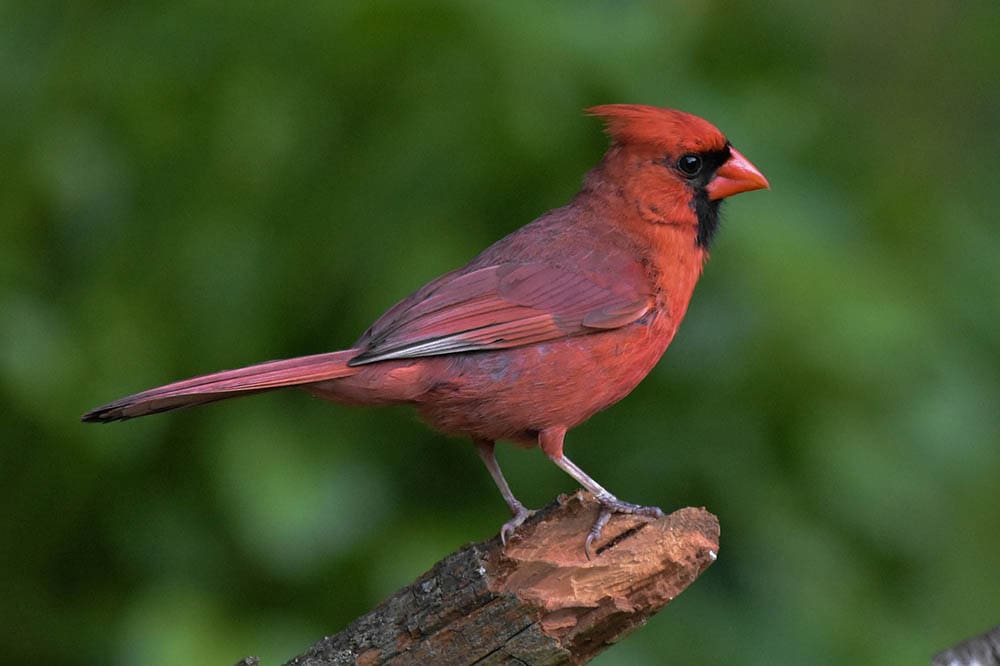
| Population | 120 million |
| Size | 8.2 to 9.3 inches |
| Habitat | Woodland edges, suburban gardens, towns, and thickets |
| Diet | Insects, seeds, weeds, grass, flowers, berries, and fruit |
The northern cardinal is a red bird in Tennessee that loves to frequent suburban backyards. They love to eat seeds, so if you put out a few different feeders, it’s only a matter of time until a northern cardinal comes to visit.
7. American Crow
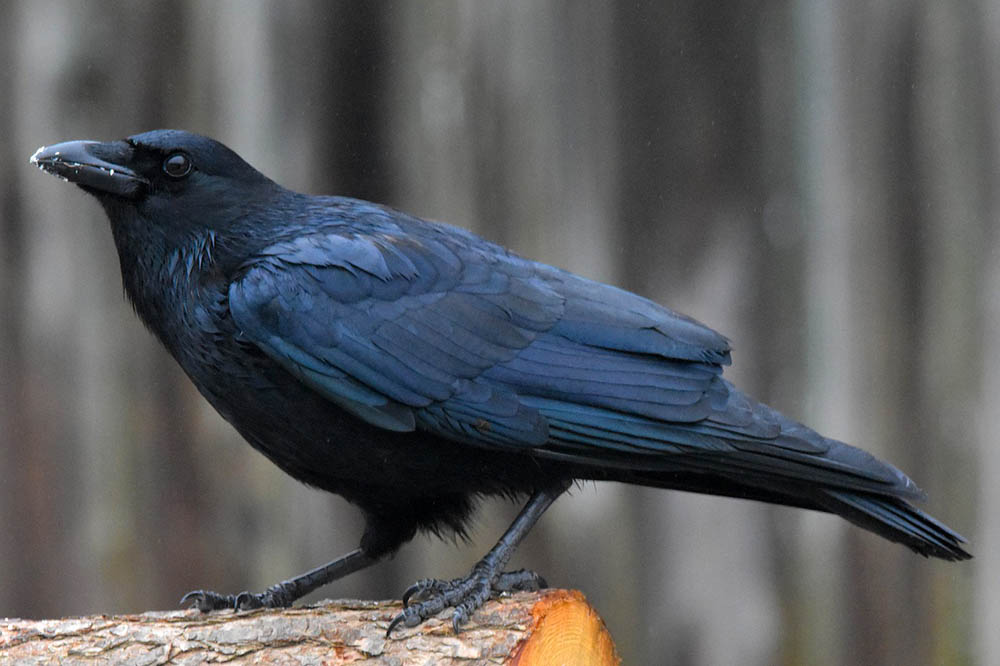
| Population | 31 million |
| Size | 16 to 21 inches |
| Habitat | Near patches of woods, city parks, garbage dumps, campgrounds, backyards, athletic fields, cemeteries, and parking lots |
| Diet | Insects, carrion, garbage, bird eggs, seeds, fruit, and berries |
Unlike most other birds on this list, chances are that you don’t want to see an American crow in your backyard. They’re much larger than other birds and tend to bully them, and they’ll even eat their eggs if they can get to them.
You can find American crows in urban and suburban environments, and they’ll eat just about anything that they can get their beaks on.
8. Mourning Dove
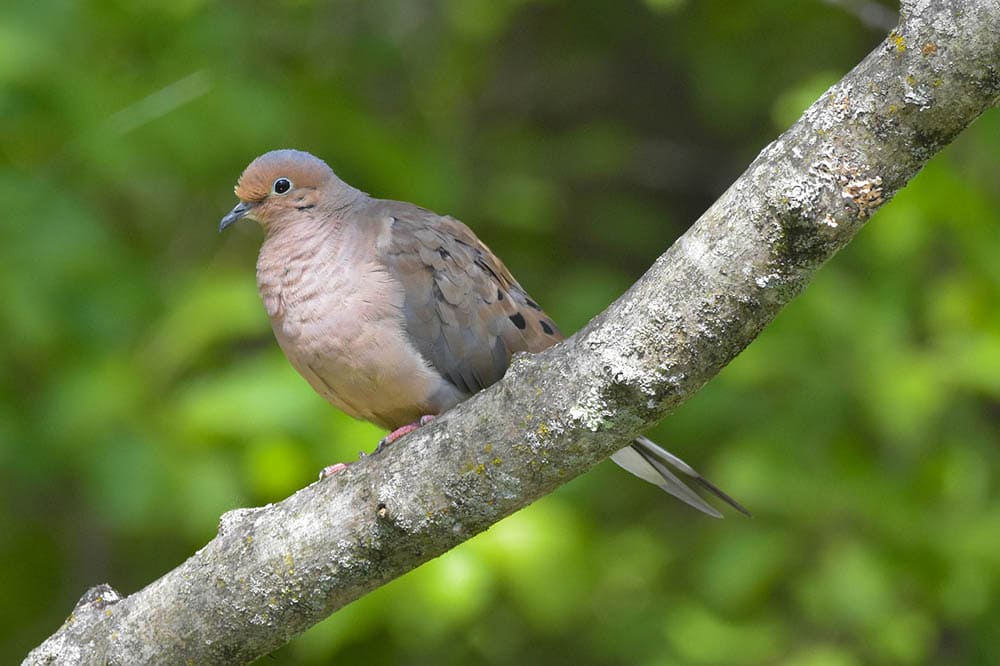
| Population | 350 million |
| Size | 8.9 to 14 inches |
| Habitat | Farms, towns, grasslands, and open woods |
| Diet | Grains, peanuts, grasses, and herbs |
If you live in a more rural area, there’s a decent chance that you’ll spot mourning doves. These birds hang out close to the ground, so if you’re trying to attract them to your yard, scatter their food on the ground.
9. Northern Mockingbird
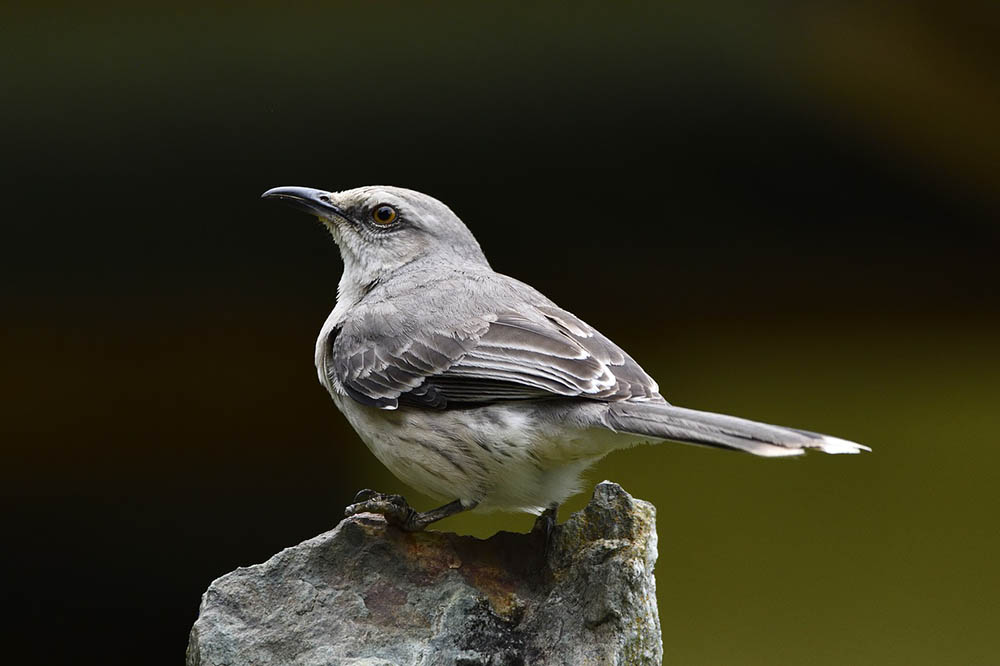
| Population | 45 million |
| Size | 8.2 to 10 inches |
| Habitat | Forest edges and open areas |
| Diet | Insects, berries, and wild fruits |
The northern mockingbird is a large Tennessee songbird that you might find if you’re near a forest or an open clearing. They love to eat insects and berries, so you likely won’t see too many stopping by unless you have a berry bush in your yard.
10. Downy Woodpecker

| Population | 13 million |
| Size | 5.7 to 6.7 inches |
| Habitat | Wilderness and suburban yards |
| Diet | Suet, larvae, and insects |
If you’re looking for the most adorable woodpecker out there, it’s the downy woodpecker. It’s also the most likely woodpecker that you will see in your yard. If you want to attract these birds to your yard, put out a suet bird feeder and they should come.
11. Carolina Wren
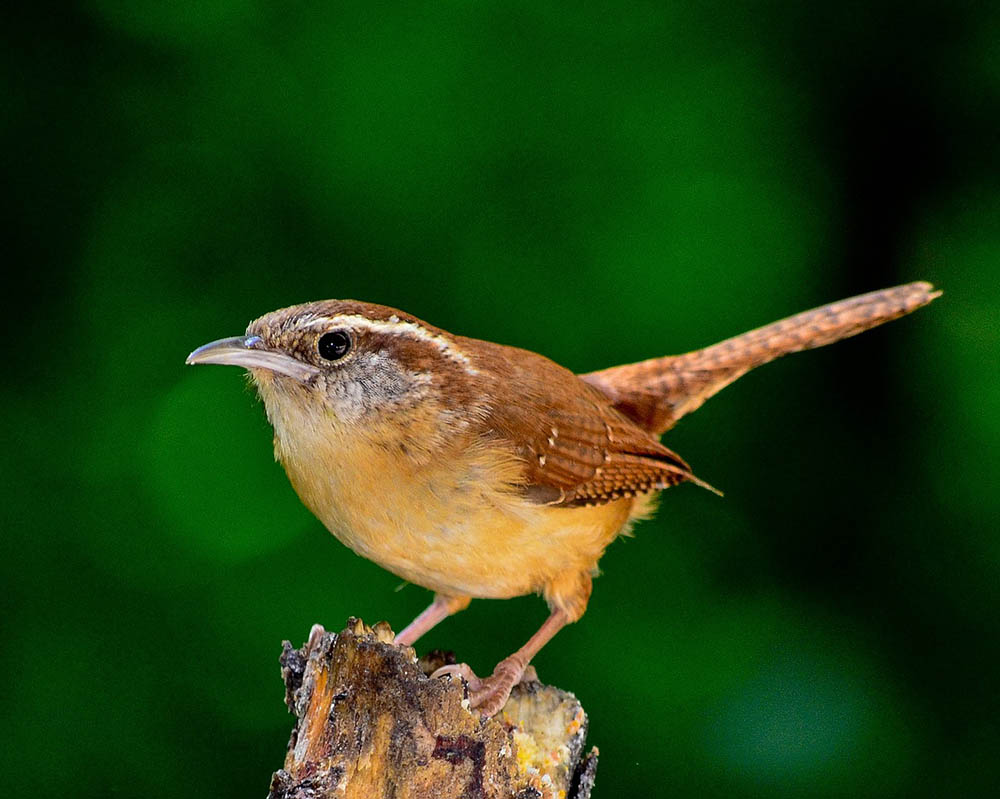
| Population | 17 million |
| Size | 4.9 to 5.5 inches |
| Habitat | Thickets, cypress swamps, woods, and ravines |
| Diet | Insects, fruits, and seeds |
The Carolina Wren is a brown bird in Tennessee that you might see passing through your yard, but they likely won’t stay there too long. They typically live in thickets and areas near water, and they primarily eat insects and fruits. However, since they do eat seeds, you might see one stopping by your feeder occasionally.
Related Read: 20 Common Backyard Birds in North Carolina (With Pictures)
12. Blue Jay

| Population | 13 million |
| Size | 8.7 to 12 inches |
| Habitat | Forests, parks, and suburban backyards |
| Diet | Nuts, insects, sunflower seeds, suet, and corn kernels |
Blue jays love visiting suburban backyards because they eat tons of food from bird feeders. You can put out nuts, sunflower seeds, suet, or corn kernels for them. You can also put out a nesting box so they’ll be around all the time!
13. Tufted Titmouse
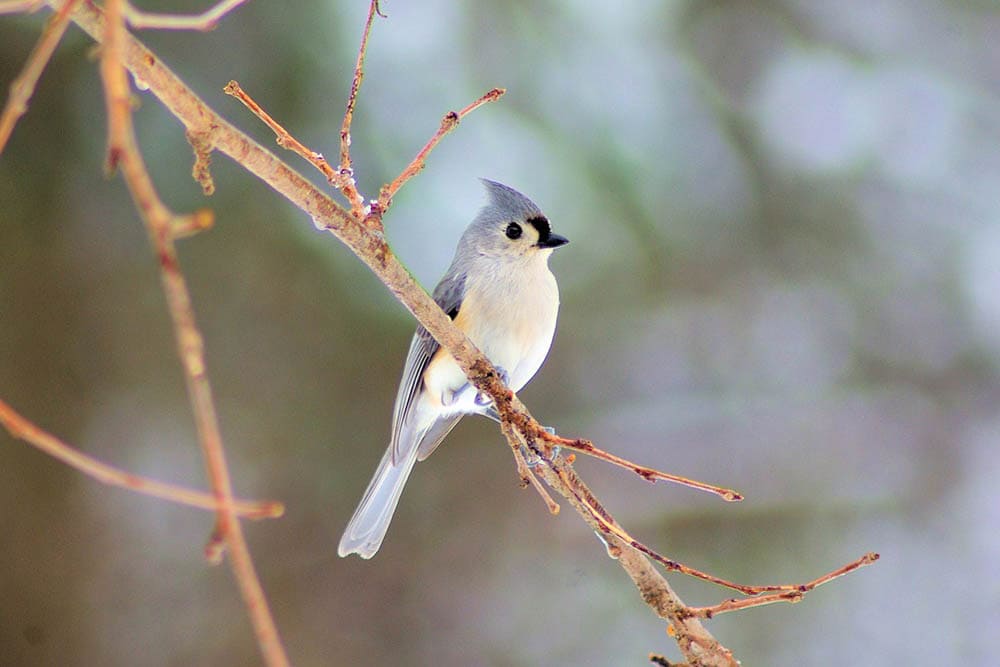
| Population | 8 million |
| Size | 5.9 to 6.7 inches |
| Habitat | Deciduous woods, parks, orchards, and suburban backyards |
| Diet | Sunflower seeds, suet, peanuts, and seeds |
The tufted titmouse might prefer wooded areas in the wild, but they’ve adapted well to suburban life, and you can often find them in backyards. They’ll chow down on seeds, peanuts, and suet, so if you have a bird feeder out, there’s a good chance that a tufted titmouse will visit.
14. Eastern Towhee

| Population | 28 million |
| Size | 6.8 to 9.1 inches |
| Habitat | Shrubby woodlands, fields, and scrublands |
| Diet | Insects, seeds, and berries |
The eastern towhee isn’t the most likely bird to spot in backyards in Tennessee, but if you keep an eye out, you’ll spot one or two from time to time. They do eat seeds, so putting out a bird feeder will definitely increase your chances of seeing one.
15. Indigo Bunting

| Population | 78 million |
| Size | 4.5 to 5.1 inches |
| Habitat | Edges of farmland, woods, road, and railways |
| Diet | Seeds, berries, buds, and insects |
Indigo buntings are beautiful blue birds, and they love to perch up high. If you have telephone lines in your neighborhood, they might perch up there for a while and swoop down to eat seeds from your backyard.
16. House Finch
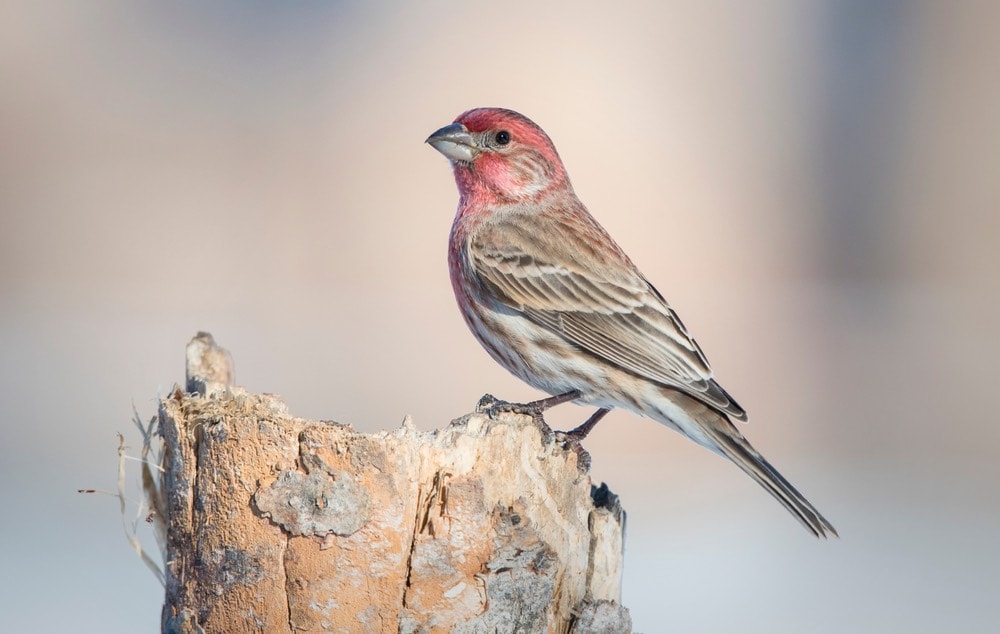
| Population | 21 million |
| Size | 5.3 to 5.7 inches |
| Habitat | Dry desert, oak savannah, near streams, and open coniferous forests |
| Diet | Weed seeds, insects, and berries |
The house finch is an adaptable bird that you can find in various landscapes in Tennessee. They’re particularly common around water, and they’ll eat weed seeds and insects throughout most of the year.
17. Barn Swallow

| Population | 190 million |
| Size | 5.7 to 7.8 inches |
| Habitat | Suburban parks, agricultural fields, lakes, and ponds |
| Diet | Flying insects and insects |
If you live in an area with plenty of space, barn swallows are sure to stop by. They also love living by open water, which makes sense because their diet consists primarily of flying insects. Anywhere in Tennessee with enough space and flying insects will attract barn swallows.
Related Read: 30 Common Backyard Birds in Pennsylvania (With Pictures)
18. European Starling

| Population | 200 million |
| Size | 8 to 9 inches |
| Habitat | Lowlands, salt marshes, and open moorland |
| Diet | Insects, berries, fruits, and seeds |
With 200 million European starlings out there, there are more than a few that stop by in Tennessee. While they primarily eat insects, you will see them eating seeds every once in a while.
They live in lowland areas, especially if there’s a chance of standing water to attract insects to the area.
19. White-Throated Sparrow

| Population | 140 million |
| Size | 5.9 to 7.5 inches |
| Habitat | Forests and partially open wooded areas |
| Diet | Millet, sunflower seeds, and insects |
If you live near trees, the white-throated sparrow is a bird that you’ll likely see near your home. They love partially wooded areas, and if you put out sunflower seeds, they’ll come check out your yard.
20. Song Sparrow
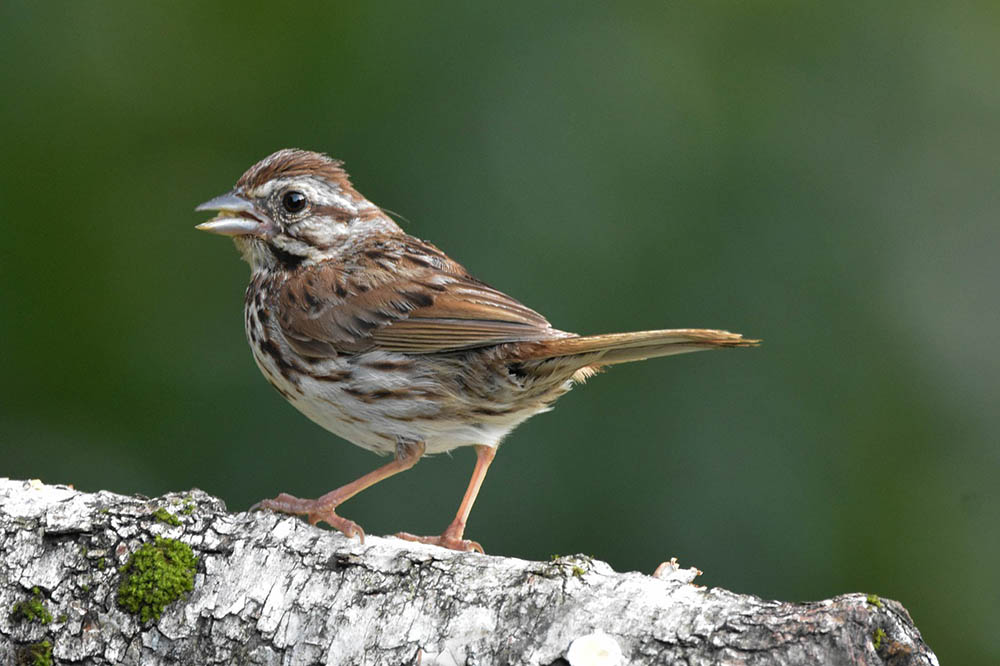
| Population | 130 million |
| Size | 4.7 to 6.7 inches |
| Habitat | Fields, by streams, woodland edges, and gardens |
| Diet | Insects, seeds, and fruit |
One type of sparrow that you can find in your yard in Tennessee is the song sparrow. They’re small sparrows, and you’re more likely to see them in gardens. You can leave seeds out for them, but they’ll primarily track down insects to eat.
21. Ruby-Throated Hummingbird
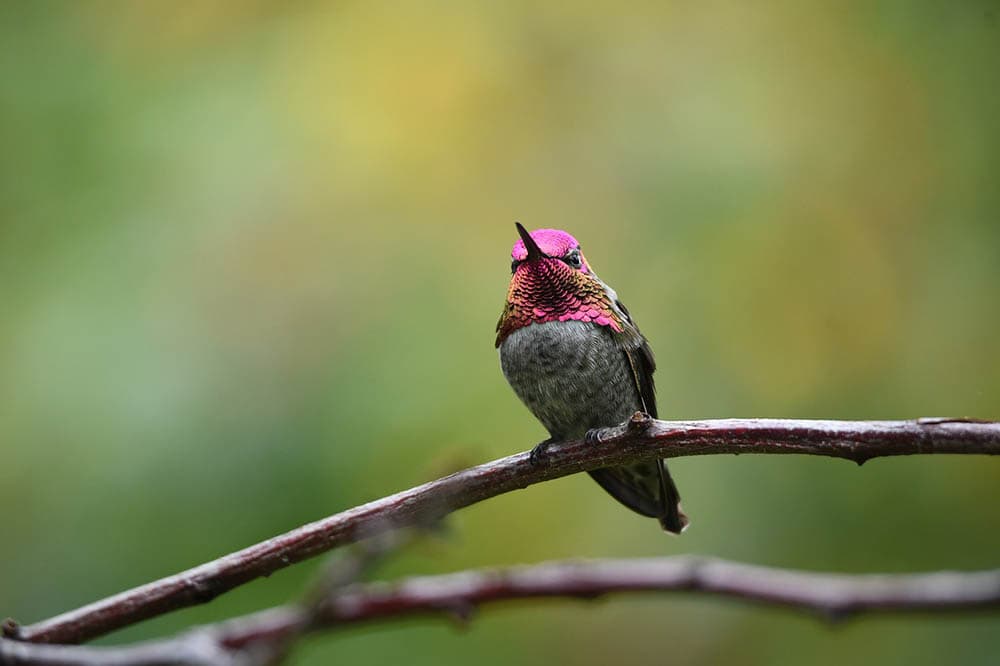
| Population | 7 million |
| Size | 3 to 3.5 inches |
| Habitat | Woodland areas and gardens |
| Diet | Nectar and insects |
Hummingbirds are among the smallest birds out there, and if you want to see a hummingbird, you’ll need to put out a special feeder for them or have a flower garden. Hummingbirds love fresh nectar, and they need to eat quite a bit. Put out a feeder, and a ruby-throated hummingbird will likely check it out while migrating through the area.
22. Eastern Kingbird

| Population | 13 million |
| Size | 7.7 to 9.1 inches |
| Habitat | Open savanna-like areas, fields, grasslands, and near water |
| Diet | Flying insects and fruit |
Unless you live near water, there’s not a great chance of an eastern kingbird checking out your backyard. They eat flying insects, so they need somewhere with open space to track them down, along with standing water.
23. White-Breasted Nuthatch
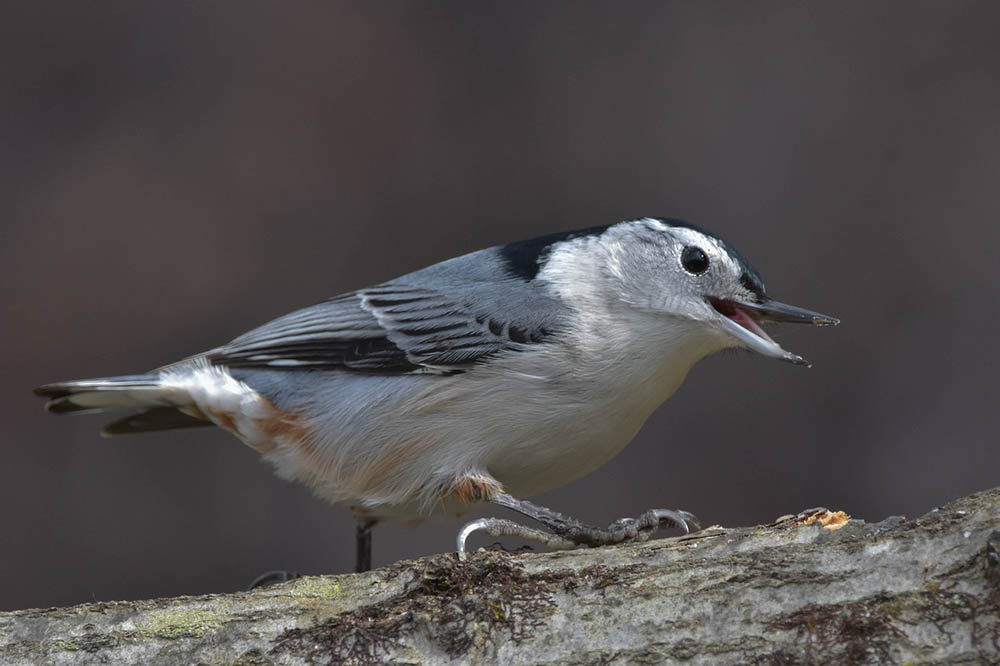
| Population | 10 million |
| Size | 5.7 to 6.1 inches |
| Habitat | Forests, woodlands, and grooves |
| Diet | Insects and seeds |
The white-breasted nuthatch lives near forested areas and open grooves, but it’s not unheard of to spot them in backyards in Tennessee. They prefer insects, but if they’re not finding enough, they will eat seeds too.
24. Orchard Oriole
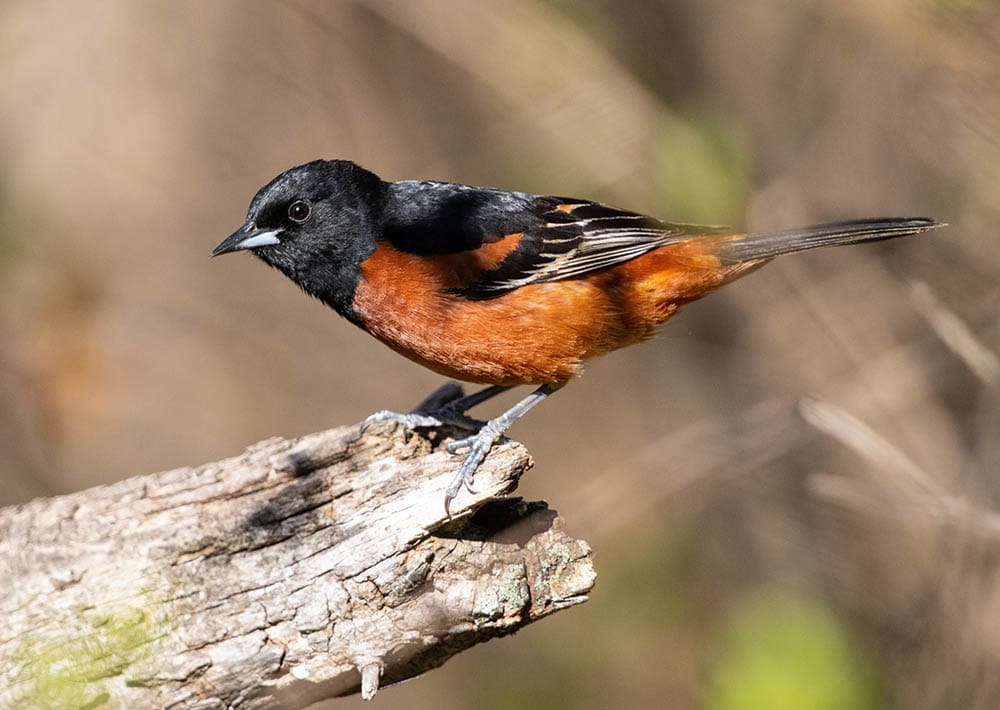
| Population | 4.3 million |
| Size | 5.7 to 7.1 inches |
| Habitat | Open woodland and areas with scattered trees |
| Diet | Nectar and pollen |
While everyone thinks of hummingbirds when they put out nectar feeders, another bird that needs nectar to survive is the orchard oriole. Their population numbers are in decline, so if you do attract a few to your yard and keep them thriving, you’ll be helping them out.
25. Yellow-Rumped Warbler
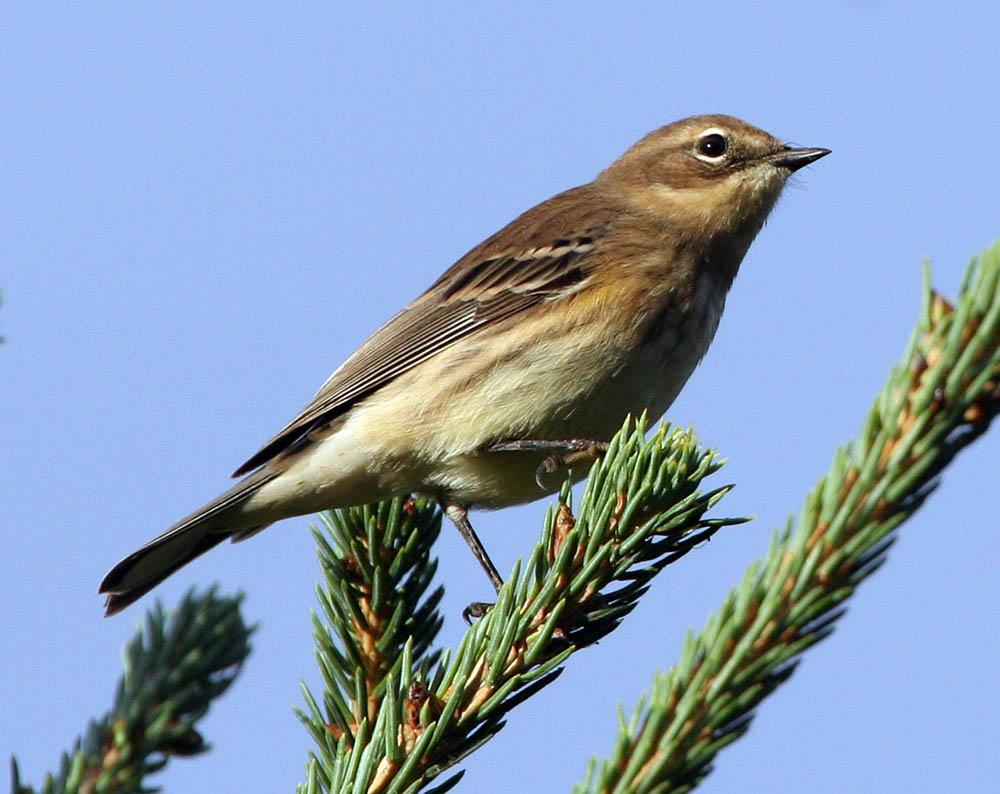
| Population | 150 million |
| Size | 4.7 to 5.9 inches |
| Habitat | Forest, mixed woodlands, openings, and bogs |
| Diet | Insects and berries |
There are tons of warbler species out there, but the most likely one that you’ll spot in Tennessee is the yellow-rumped warbler. With over 150 million of them out there, you’ll likely spot a few if you’re looking. However, they are hard to attract with traditional bird feeders.
26. Eastern Phoebe
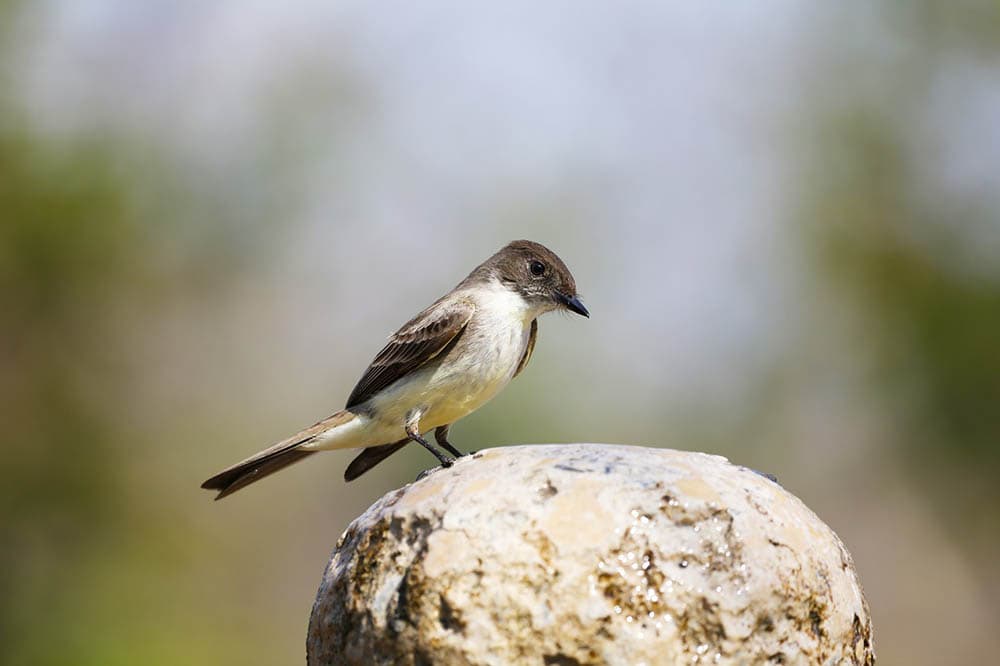
| Population | 16 million |
| Size | 4 to 5 inches |
| Habitat | Open woodland, farmland, and suburbs |
| Diet | Insects and berries |
While previous eastern phoebe generations lived out in open areas, modern ones have adapted quite well to suburban life. They don’t eat many seeds or nuts, though, so if you want to attract any to your yard, a nesting box is your best option.
27. Northern Flicker

| Population | 16 million |
| Size | 12 to 14 inches |
| Habitat | Woodland, forest edges, open fields, city parks, and suburbs |
| Diet | Insects, fruits, and seeds |
The northern flicker is a bird that’s adapted well to humanized conditions. You can find them in city parks and suburbs, as well as traditional habitats, like woodlands. They prefer insects, but they will eat seeds from bird feeders if they’re available.
28. Red-Winged Blackbird
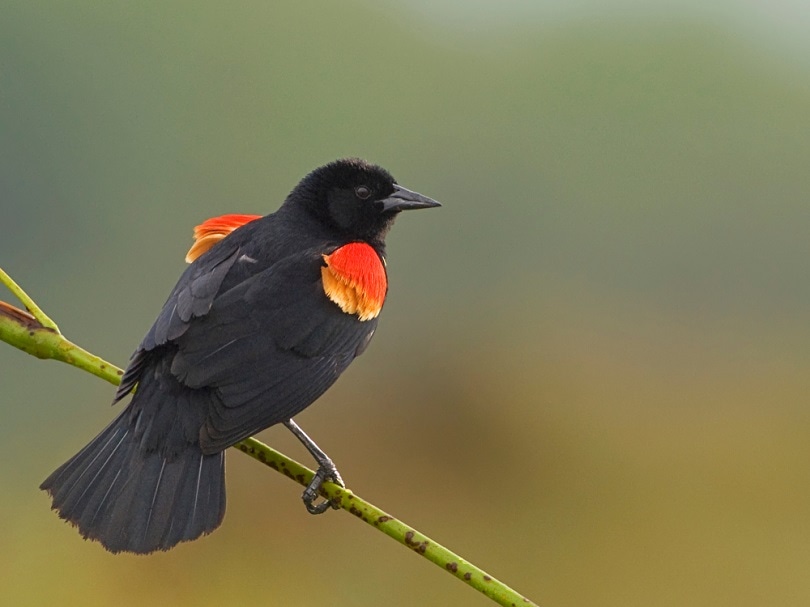
| Population | 210 million |
| Size | 8.5 to 9.5 inches |
| Habitat | Saltwater marshes, old fields, and near ponds and lakes |
| Diet | Insects and berries |
If you live near somewhere with water, the red-winged blackbird is a bird that you might see. They’re a slightly bigger bird compared to many others on this list, but they’re not considered large. They feed primarily on insects, so there’s not too much that you can do to attract them to your yard.
29. Chipping Sparrow

| Population | 230 million |
| Size | 5 to 5.8 inches |
| Habitat | Coniferous forest edges, open woodlands, and savannas |
| Diet | Seeds and millet |
While chipping sparrows primarily leave near forest edges and open woodlands in Tennessee, since they primarily eat seeds and millet, you can attract them to your yard. Put out plenty of feeding options, and they should start stopping by before too long.
30. Eastern Meadowlark
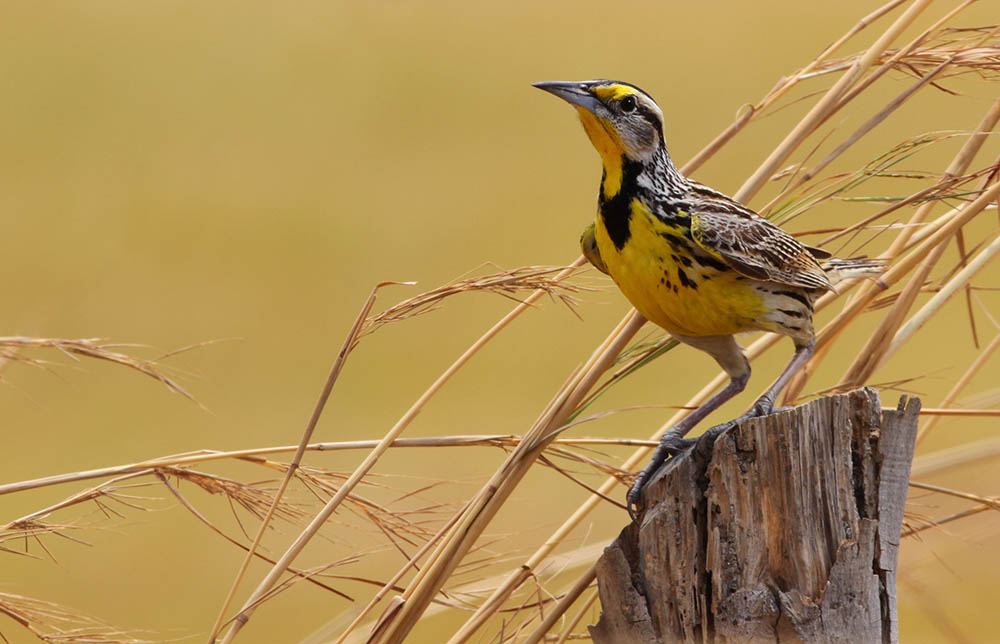
| Population | 37 million |
| Size | 7.5 to 10 inches |
| Habitat | Open fields, pastures, and prairies |
| Diet | Insects and seeds |
If you live near an open field or pasture of some sort, there’s a good chance that you’ll spot a few eastern meadowlarks. They prefer insects, but if they’re not finding enough, they will visit bird feeders for seeds.

Conclusion
With so many birds roaming Tennessee, if you put out a feeder or two, it’s only a matter of time until you get a few visitors!
Featured Image Credit: MOHANN, Pixabay
Table of Contents
- The 30 Most Common Backyard Birds in Tennessee
- 1. Red-Bellied Woodpecker
- 2. American Goldfinch
- 3. Eastern Bluebird
- 4. Carolina Chickadee
- 5. American Robin
- 6. Northern Cardinal
- 7. American Crow
- 8. Mourning Dove
- 9. Northern Mockingbird
- 10. Downy Woodpecker
- 11. Carolina Wren
- 12. Blue Jay
- 13. Tufted Titmouse
- 14. Eastern Towhee
- 15. Indigo Bunting
- 16. House Finch
- 17. Barn Swallow
- 18. European Starling
- 19. White-Throated Sparrow
- 20. Song Sparrow
- 21. Ruby-Throated Hummingbird
- 22. Eastern Kingbird
- 23. White-Breasted Nuthatch
- 24. Orchard Oriole
- 25. Yellow-Rumped Warbler
- 26. Eastern Phoebe
- 27. Northern Flicker
- 28. Red-Winged Blackbird
- 29. Chipping Sparrow
- 30. Eastern Meadowlark
- Conclusion
About the Author Robert Sparks
Robert’s obsession with all things optical started early in life, when his optician father would bring home prototypes for Robert to play with. Nowadays, Robert is dedicated to helping others find the right optics for their needs. His hobbies include astronomy, astrophysics, and model building. Originally from Newark, NJ, he resides in Santa Fe, New Mexico, where the nighttime skies are filled with glittering stars.
Related Articles:
Monocular vs Telescope: Differences Explained (With Pictures)
10 Types of Hummingbirds in Arkansas (With Pictures)
8 Types of Hummingbirds in Nebraska (With Pictures)
5 Types of Hummingbirds in Idaho (With Pictures)
3 Types of Hummingbirds in Mississippi (With Pictures)
8 Types of Hummingbirds in Kansas (With Pictures)
5 Types of Hummingbirds in West Virginia (With Pictures)
5 Types of Hummingbirds in Ohio (With Pictures)
